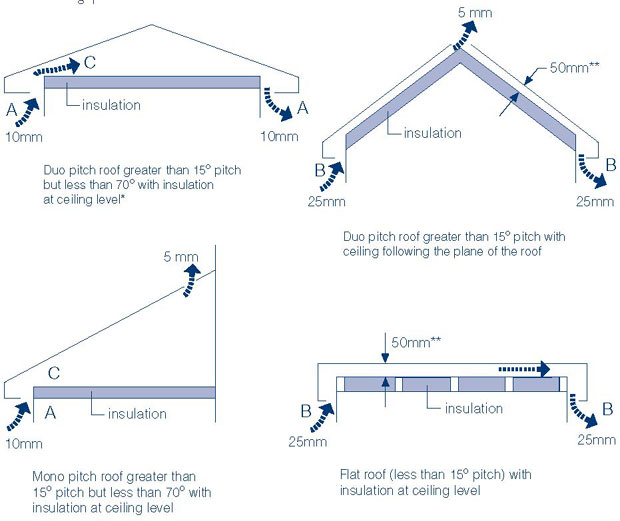Roof Ventilation Requirements Scotland

Take a look at the reasons behind roof ventilation the different types and if you need it.
Roof ventilation requirements scotland. We publish technical handbooks which explain how to achieve the requirements set out in the building scotland regulations 2004 we regularly consult with industry to review our guidance. This guidance page gives you a broad view of the requirements for using the roof space in dwellings and if more detailed information is required it is necessary to refer to the technical handbook and the building standards scotland regulations. It is important that air movement occurs and is not impeded by any framing members of the. Cold roofs and warm roofs.
In this case ventilation is required and the roof can still become wet with condensation which may cause materials to decay. The amount of space you devote to intake must be equal to the amount you allow for exhaust and these must be calculated according to the size of your attic and slope of your roof. It applies to both new build and refurbished roofs. A range of options and models are available including pull cord timer humidistat remote switch and selv extra low voltage.
Cold roofs have the waterproof layer placed directly onto the roof deck and the insulation inside the roof just above the ceiling. Prior to installing the ridge vent a 1 inch wide strip of roof decking is cut out along both sides of the ridgeline to allow for air movement through the vent. A ridge vent is a ventilation strip that is placed along the ridgeline of the home. As modern construction techniques continue to place more emphasis on energy conservation minimising the heat loss from buildings insulation thicknesses have increased and air tightness is constantly improving.
A minimum 50mm free air path should be maintained between the top of the insulation and the underside of the roof decking. Why is there a need for roof ventilation. 3 14 ventilation 3 14 functional standard 3 14 0 introduction 3 14 1 ventilation generally 3 14 2 ventilation of dwellings 3 14 3 ventilation of conservatories 3 14 4 ventilation of areas designated for drying of washing 3 14 5 trickle ventilators 3 14 6 passive stack ventilation systems 3 14 7 conservatories and extensions built over existing windows 3 14 8 mechanical. A new standard bs 8612 was released in february 2018 and sets out minimum performance requirements for dry fixed roofing systems in regards to fixing wind load resistance durability and ventilation according to bs 5250.
The key to proper ventilation of your roof and attic is balance. There are two types of flat roof. Building regulations contain the technical requirements to protect the public interest. Swish ventilators for roof voids are covered by british board of agrément certificate no 91 2620.














































